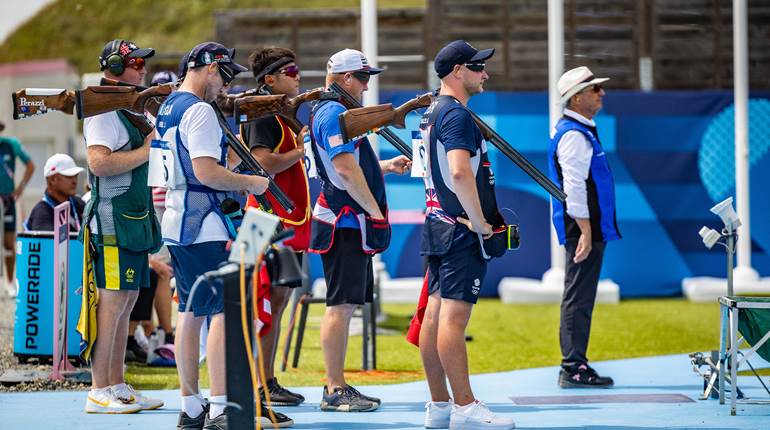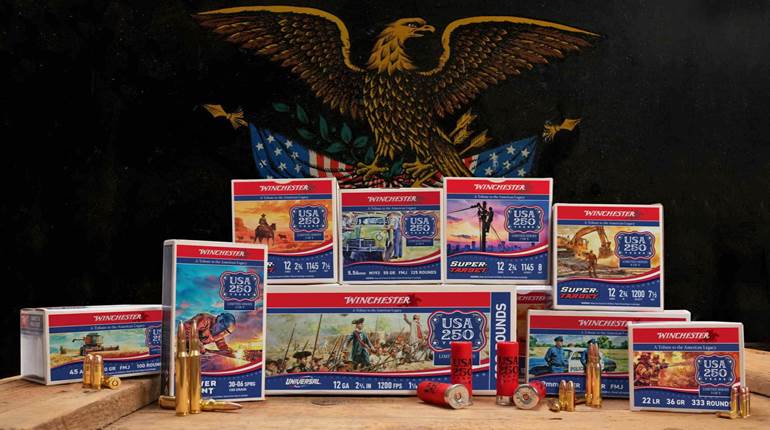
4/23/2013
The idea of a 7 mm cartridge with an uncommonly large appetite for propellant is probably of British origin. The .280 Ross was introduced around 1905 in the ill-fated Ross straight-pull rifle and eventually loaded in the United States by Remington and Winchester.
The .275 Holland & Holland Mag. came along in 1912 in two case designs, belted for bolt-action rifles and flanged for doubles and single-shots. In Britain it was loaded with a 160-grain bullet at 2,675 fps, while in America Western Cartridge Co. advertised it with a 175-grain bullet at 2,800 fps. Others of early British design are the .280 Jeffery and the .280 Lancaster.
The first large-capacity 7 mm cartridge designed by an American was the .280 Adolph Express. It was created around 1914 by rifle designer and manufacturer Charles Newton and, like some cartridges of English design, it was loaded with a 0.288-inch bullet. In his book Charles Newton, Father of High Velocity, author Bruce M. Jennings, Jr., mentions the possibility of there being two other Newton cartridges loaded with the smaller 0.284-inch bullet. One was on the .30 Newton case, while the second was on a smaller case with about the same propellant capacity as the 7x61 mm Sharpe & Hart, which made its debut about 40 years later.
During the 1940s and 1950s wildcatters across America came up with a number of 7 mm cartridges on the .300 H&H Mag. case. The .280 Dubiel Mag. had a following, but one developed by Oklahoma rifle-builder Art Mashburn seemed to enjoy the most success among hunters. Mashburn actually had three versions, one with a bit smaller capacity than the later 7 mm Rem. Mag., another holding slightly more propellant than the Remington cartridge and a third on the full-length .300 H&H Mag. case. The mid-sized case proved best for propellants available at the time and became known as the 7 mm Mashburn Super Mag.
Interest in 7 mm wildcats on the Holland & Holland belted case slowed considerably when, in 1962, Remington adopted Les Bowman’s .280 Rem. Mag. and introduced it in the Model 700 rifle as the 7 mm Rem. Mag. At the time, a wildcat on the full-length .300 Wby. Mag. case called the 7 mm-.300 Wby. Mag. had been around for a few years among 1,000-yard target shooters, but propellants with burn rates slow enough to produce the velocities the big case was capable of were scarce. Hodgdon’s H4831 was a bit fast and, while H870 had the correct burn speed, competitors complained of a stubborn fouling it left behind in rifle barrels.
Soon after the 8 mm Rem. Mag. came along in 1978, I necked its case up and down for several different calibers and eventually moved forward with those in .257, 6.5 mm, 7 mm, .358 and .416. The 7 mm and .416 versions came first in a switch-barrel rifle built by Kenny Jarrett in early 1987. On a blueprinted Remington Model 700 action with a Shilen trigger, the 7 mm Shooting Times Westerner barrel was made by Schneider with a 1:10-inch twist. McMillan built the fiberglass stock, and most who see it for the first time mistake its wood-grain finish for nicely figured walnut. Hendriksen Tool Co. ground the chamber reamers, and RCBS made the reloading dies.
The other barrel was chambered for the 8 mm Rem. Mag. case necked up for 0.416-inch bullets but I never got around to seriously working on it until about a year later when Remington introduced its .416 Mag. I was not surprised when factory ammunition worked perfectly in my rifle and was quite accurate to boot. The Remington cartridge, by the way, is quite similar to a couple of old wildcats, the .416 Barnes Supreme of the 1950s and the .416 Hoffman of the 1970s. Both are on the full-length .375 H&H Mag. case with its body taper reduced for an increase in capacity.
When writing my initial article on the 7 mm STW in 1988, I made it clear that I was in no way attempting to stake claim to the concept of a 7 mm cartridge with a big appetite for propellant. Rather, I was simply wandering along a trail blazed by others long before I got the idea. I also pointed out that since case capacity of the 7 mm STW is about the same as for the 7 mm-.300 Wby. Mag. and Art Mashburn’s cartridge on the full-length .300 H&H case, their velocity potential is the same.
Timing can mean the difference between success and failure for a new cartridge, and the 7 mm STW arrived when the time was ripe. A propellant with a burn rate slow enough to generate top velocities from the big cases was not available until Hodgdon started selling military-surplus H870 during the late 1940s. That propellant was still available when I started working with the 7 mm STW and, although its fouling had been a problem for target shooters who squeezed off long strings of shots in rapid succession, it proved to be a great choice behind 160- and 175-grain bullets in the 7 mm STW so long as the barrel was allowed to cool down between three-round strings and its bore cleaned with a good solvent every 30 rounds or so. Other suitable propellants available at the time were IMR-7828, MR-8700 and H5010, the latter since replaced by Hodgdon with newly manufactured H50BMG. Those were eventually joined by other slow-burners such as Reloder 22 and 25, Retumbo, US869, H1000, Supreme 780 and Ramshot Magnum.
My introductory article on the cartridge was published in Shooting Times in 1988. It became quite popular very quickly for several reasons-—the most important being the ease of re-chambering rifles from 7 mm Rem. Mag to 7 mm STW. Several months after my article was published, a Texas gunsmith informed me that he had already re-chambered more than 600 rifles for it. I had the work done by Dennis Olson of Plains, Mont., on a Ruger No. 1S, and it proved to be considerably more accurate than with its factory 7 mm Rem. Mag. chamber. Others have reported improvement in accuracy after having rifles re-chambered with some giving credit to the cartridge. I have my doubts about the 7 mm STW being a more accurate cartridge than the 7 mm Rem. Mag. and tend to believe it was due to better chambers reamed by gunsmiths who did the work.
Other wildcat cartridges I had developed in the past had never gained factory cartridge status, so I was quite surprised when a Winchester representative contacted me about the possibility of his company having the 7 mm STW approved by SAAMI and loading the ammunition. A couple of weeks later I was informed that company officials had decided against it, mainly because they believed competing publications would resist giving ink to a cartridge with the Shooting Times moniker.
Remington also took a look at the 7 mm STW but initially backed off after deciding it might cut too deeply into sales of the 7 mm Rem. Mag. During that time, the 8 mm Rem. Mag. was on its last legs and had been dropped from the Model 700. Suddenly, orders from distributors for thousands of 8 mm Rem. Mag. unprimed cases began to pour in; a bit of snooping revealed most being sold to gunsmiths who were re-chambering or building rifles in 7 mm STW and to handloaders who already owned rifles chambered for it. The discovery obviously changed a few minds at Remington; in a special media ceremony held during the 1997 NRA Annual Meetings & Exhibits, I was presented with the very first production Model 700 built in 7 mm STW. It was the Sendero SF variant with a 26-inch barrel.
I also received what was said to be the first box of 140-grain Core-Lokt 7 mm STW ammunition to come off the production line. It was rated at 3,325 fps, but that first lot actually exceeded 3,400 fps in rifles with 26-inch barrels. Ten years as a wildcat had obviously created somewhat of a demand for factory-loaded 7 mm STW ammunition. Twelve months after Remington domesticated it, I was informed that just more than 600,000 rounds had been sold. I am not sure how many companies have offered rifles in 7 mm STW but most large manufacturers, as well as smaller custom shops, have manufactured them at some point. And, of course, gunsmiths across the country continue to rebarrel rifles for the cartridge.
Ammunition is available from several sources. Federal loads the 160-grain Trophy Bonded Tip—my favorite for use on everything from deer to elk. Nosler Trophy Grade loaded with the 160-grain AccuBond is also quite good. Five additional loadings in the Nosler Custom line range from the 140-grain Ballistic Tip to the 160-grain Partition. Ammunition is also available from smaller shops such as Precision Cartridge, DoubleTap, HSM and Conley Precision Cartridge.
Unprimed 7 mm STW cases are available from Nosler and Remington. The case is also easily formed as I did years ago by using a 7 mm STW full-length resizing die to neck down 8 mm Rem. Mag. brass. Necking down .300 H&H Mag. brass and fireforming with a reduced propellant charge is another option; neck length ends up a bit shorter than standard but not enough to really matter. Heavy charges of slow-burning powders required for top velocities call for a magnum primer. The Rem. 91/2M and CCI 250 are good choices but the Federal 215 in either its standard or Gold Medal Match variation is the most popular.
There was a time when I used 140-grain bullets at 3,400 fps or so almost exclusively when hunting deer-size game in open country. I still do on occasion, but nowadays I am more inclined to stick with a good 160-grain bullet on everything I hunt with the 7 mm STW. When exiting the muzzle at 3,200 fps and zeroed 3-inches high at 100 yards, a bullet with a ballistic coefficient in the neighborhood of .500 is dead on point of aim at 300 yards and only about 8-inches low at 400 yards, which is about as far away as I care to shoot at game with any cartridge. Residual energy at that distance is around 2,300 ft.-lbs.
I recommend a barrel no shorter than 24 inches for the 7 mm STW and actually prefer 26 inches. Even longer doesn’t hurt. A friend of mine who has a custom rifle on the Ruger No. 1 action in 7 mm STW with a 30-inch barrel gets velocities about 130 fps faster than I get from my 26-inch barrels. Overall length of his Ruger No. 1 with a 30-inch barrel is the same as a long-action Model 700 with a 26-inch barrel.
There has been a bit of confusion over how the 7 mm STW case was originally formed. As clearly illustrated in SAAMI drawings for the two cartridges, the body of the 7 mm STW case tapers to a maximum diameter of 0.487 inches at its juncture with the shoulder, the same as for the 8 mm Rem. Mag. case. This is also evident in cartridge drawings shown in various reloading manuals. While I am on the subject, the .257 STW and 6.5 STW cases were also formed by necking down 8 mm Rem Mag. brass with no other change. Today they are more commonly formed by necking down 7 mm STW brass.
The .358 STA is the one exception in the family. When developing it, I chose to increase the capacity of the 8 mm Rem. Mag. case by fire-forming it to less body taper and a sharper shoulder angle. As shown in the SAAMI drawing for it, diameter at the body/shoulder juncture is 0.502 inches and shoulder angle is 35 degrees. Those same dimensions along with .358 STA load data also appear in the 6th and 7th editions of the Nosler Reloading Guide.





































